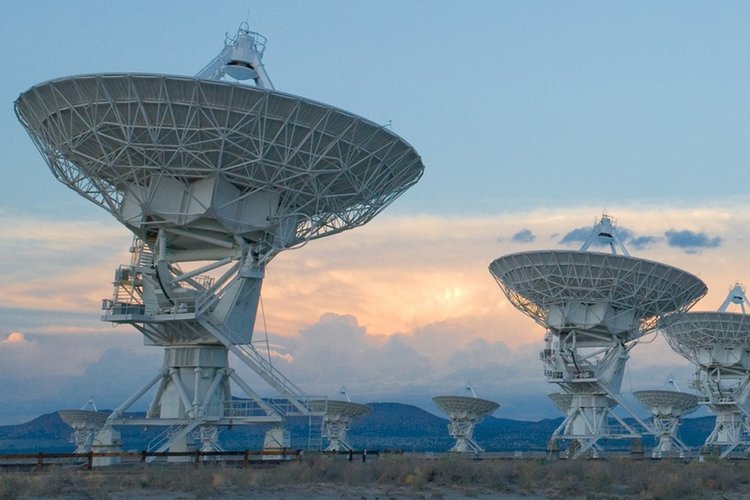Karl G. Jansky Very Large Array
Magdalena, New Mexico

The Karl G. Jansky Very Large Array (VLA) is the most versatile, widely-used radio telescope in the world and provides the scientific community with the tools necessary to solve some of the most eluding mysteries of the universe.

The VLA, located on the Plains of San Agustin, New Mexico, is an exceedingly powerful scientific instrument that has transformed many areas of astronomy. Dedicated in 1980, the VLA consists of 27 antennas arranged in a “Y” pattern. To date, the VLA has been used by more astronomers producing more scientific papers than any other radio telescope in the world. The VLA exceeds all other radio astronomy facilities with its combination of sensitivity, flexibility, speed and overall imaging quality.
We put our telescopes on rails. Four times a year, a specially-designed rail truck, called a transporter, picks up telescopes and hauls them one at a time farther down their track. Over the course of a year, the VLA lengthens each of its legs from two-thirds of a mile to 23 miles long.
Observations
- Black holes and protoplanetary disks around young stars
- The discovery of magnetic filaments and traced complex gas motions at the Milky Way’s center
- Probing the Universe’s cosmological parameters
- Providing new knowledge about the physical mechanisms that produce radio emission
Future Developments
Astronomers today are imagining the next generation Very Large Array (ngVLA). A consensus of the larger astronomical community believes with modifications resulting in 244 dishes, each measuring 18 meter in diameter and spreading over 5,505 miles (8,860 km), this modified observatory will address some of the biggest science questions that radio astronomy can help answer. Areas of exploration include the formation of solar systems, high-energy events, the detection of supermassive black holes and the chemical foundations of life.
The Next-Generation Very Large Array (ngVLA) includes:
- 10x the sensitivity of the Jansky VLA & ALMA
- science operations from 1.2 – 116 GHz
- 30x longer baselines (1000 km) that yield mas-resolution, with extended baselines to continental scales (8860km)
- a dense antenna core on km-scales for low surface brightness imaging
Visit the ngVLA website to learn more and view the live webcam feed for the latest progress on the prototype antenna.
